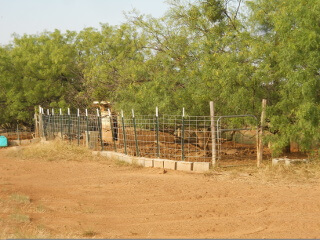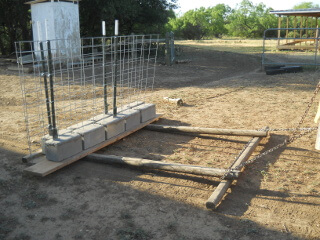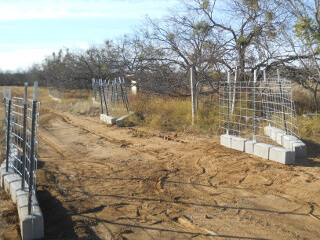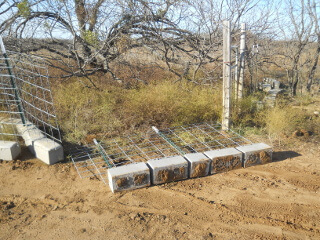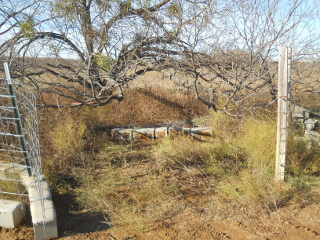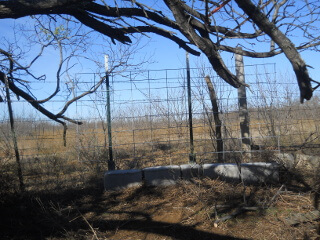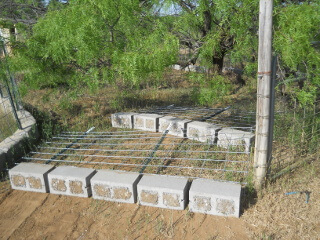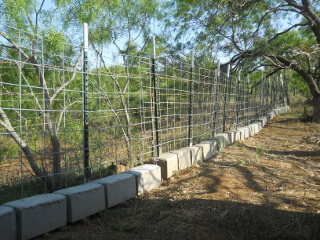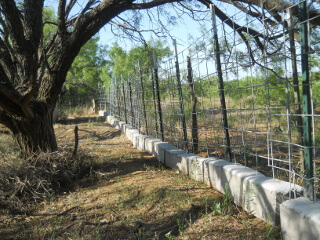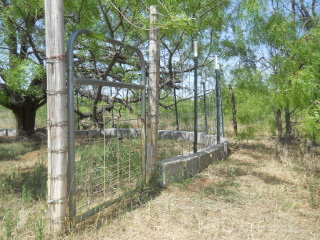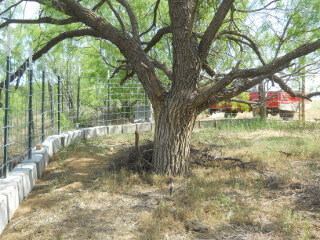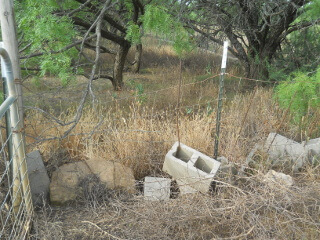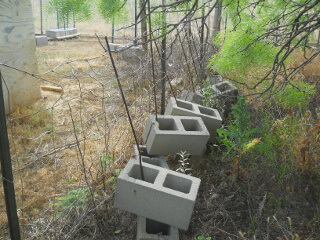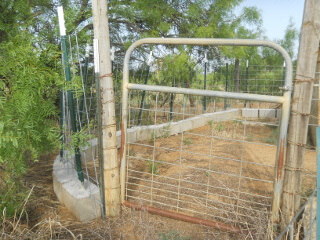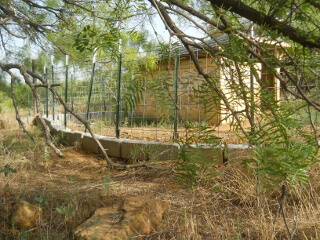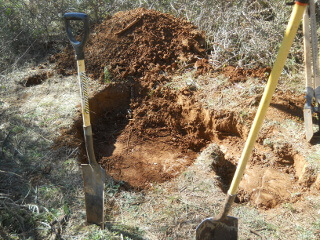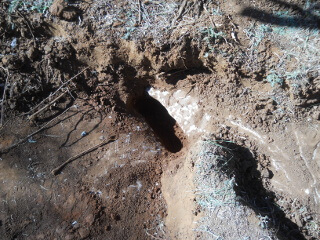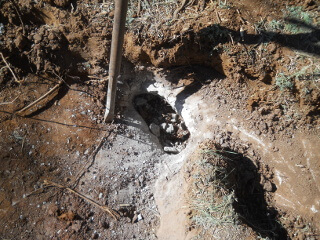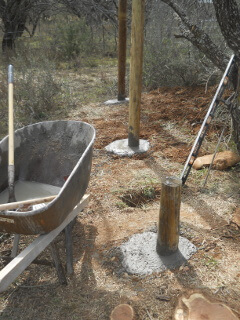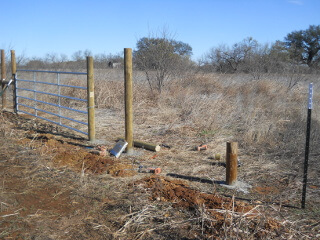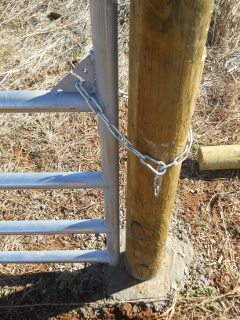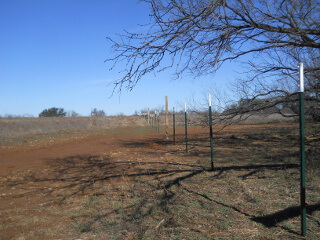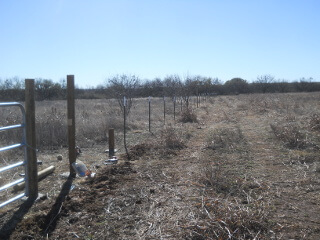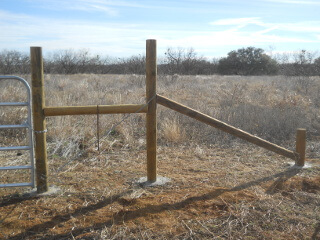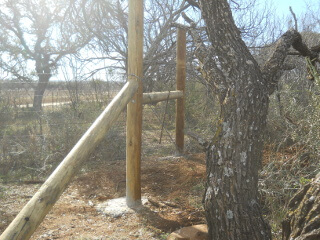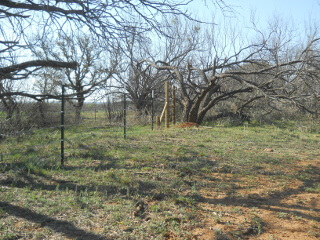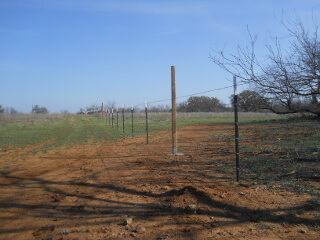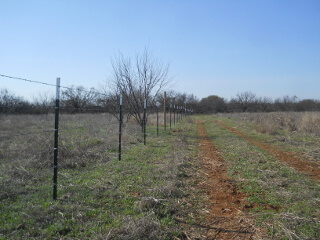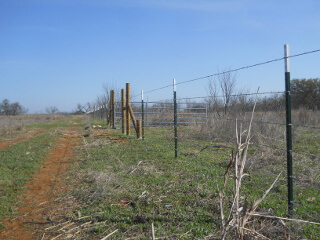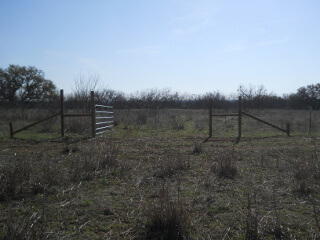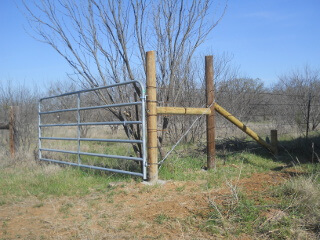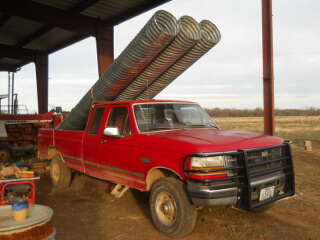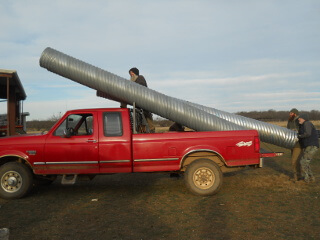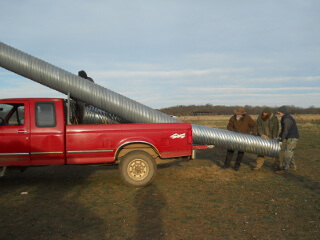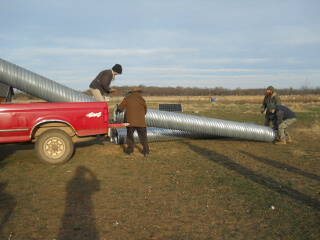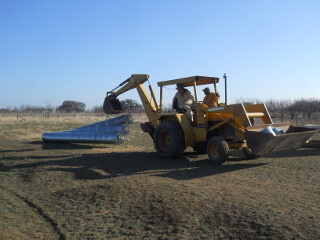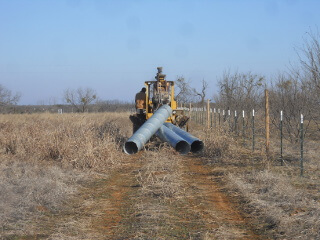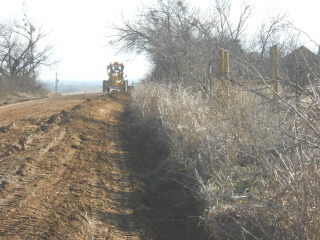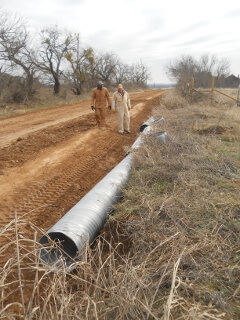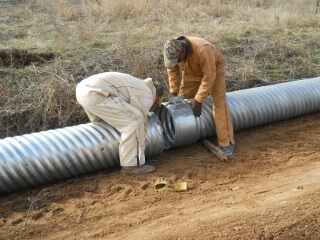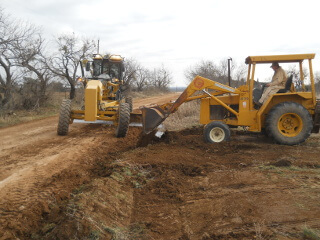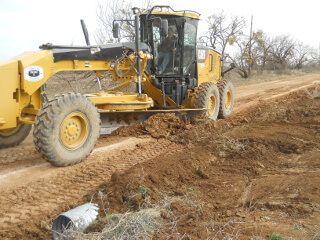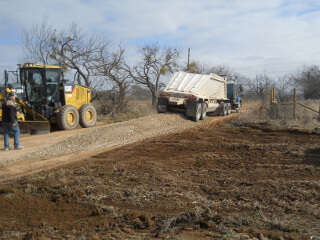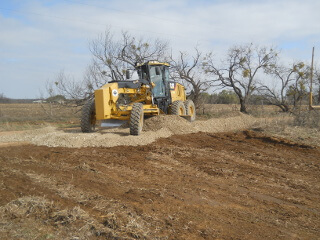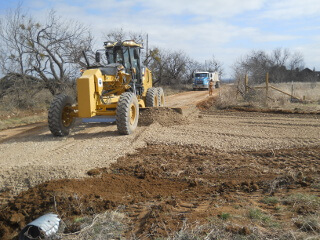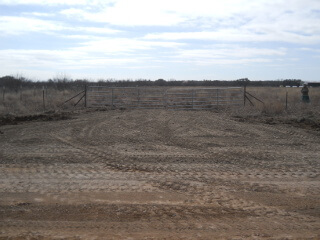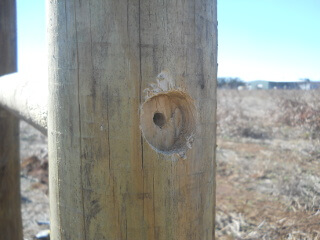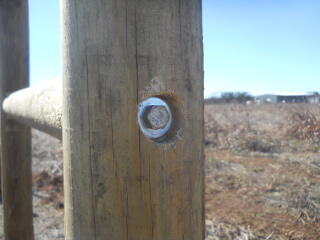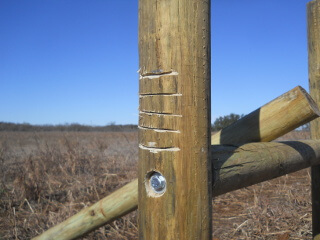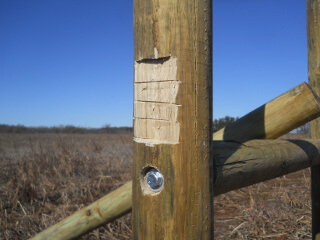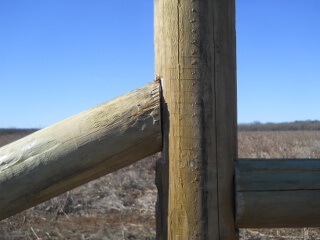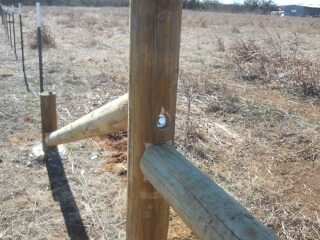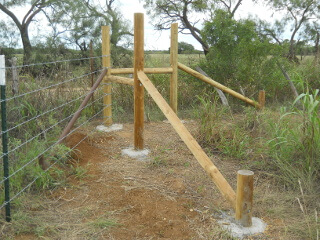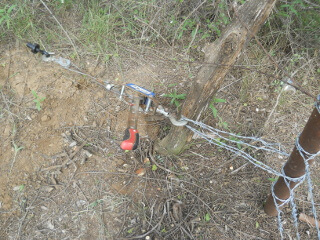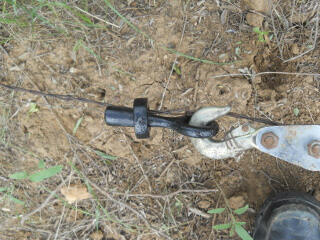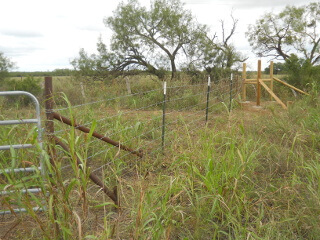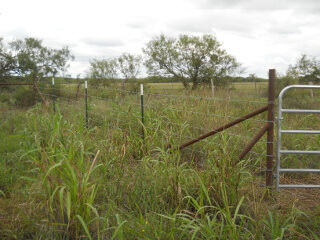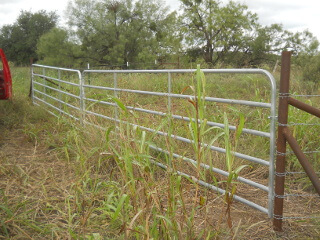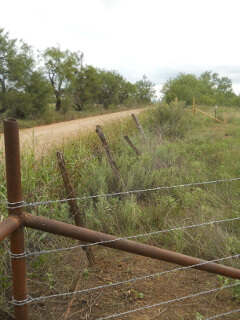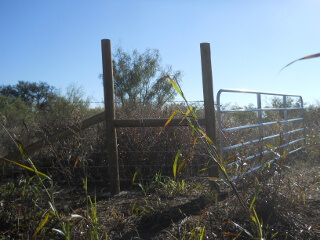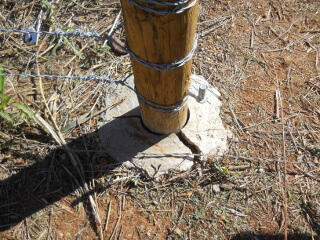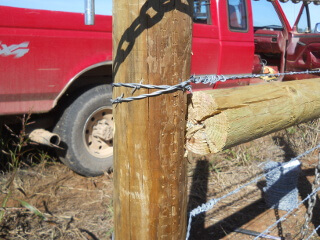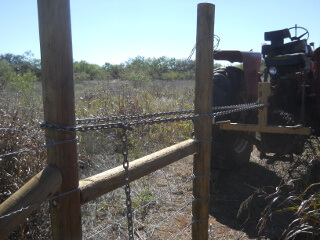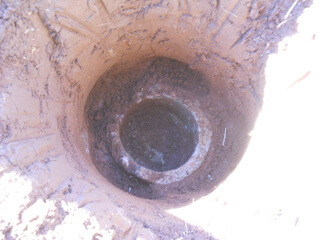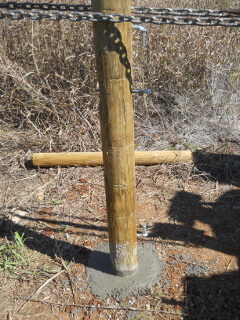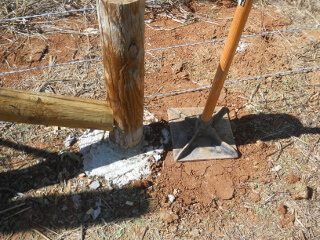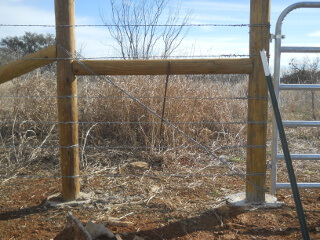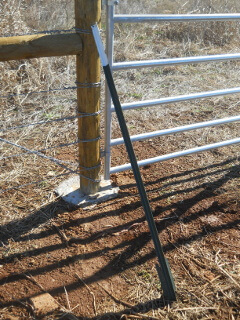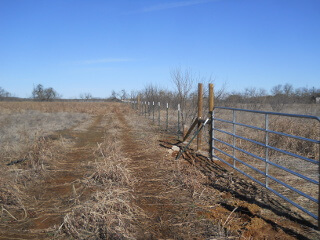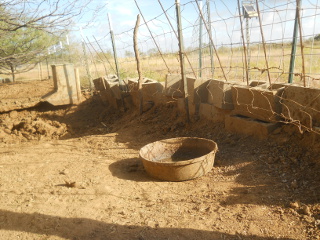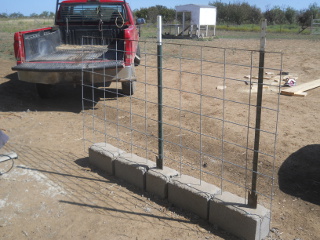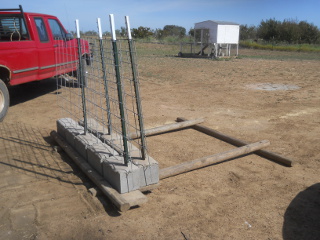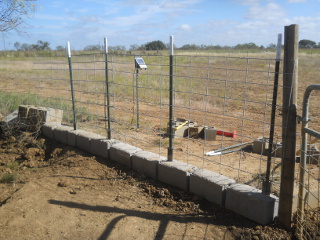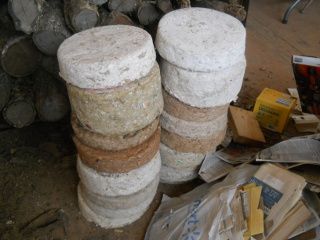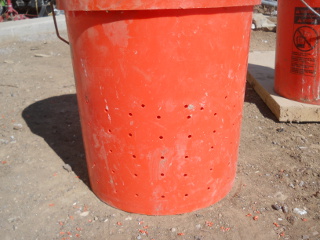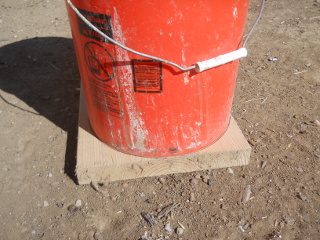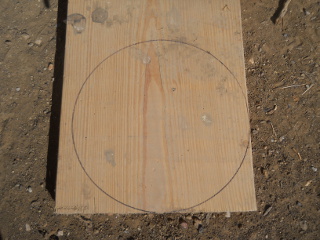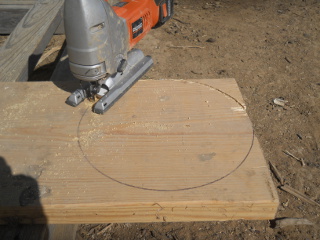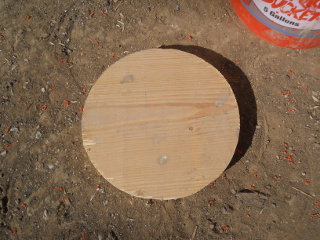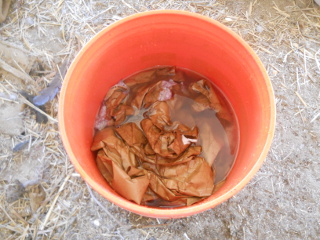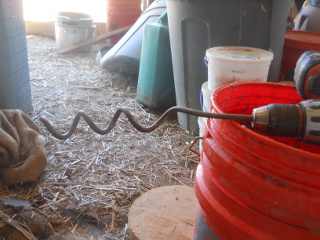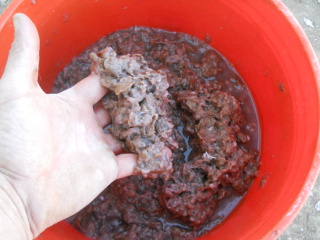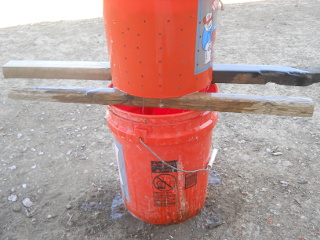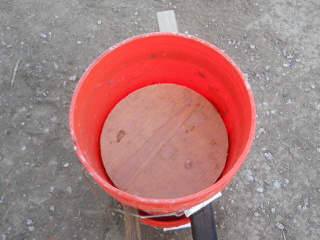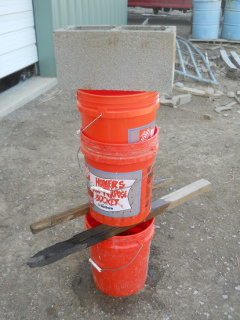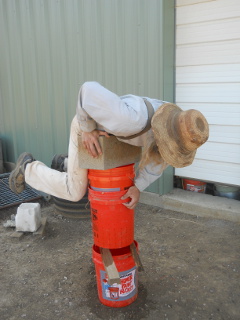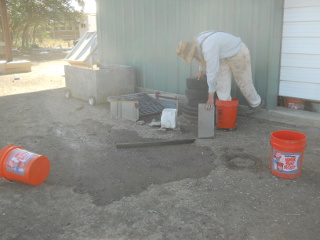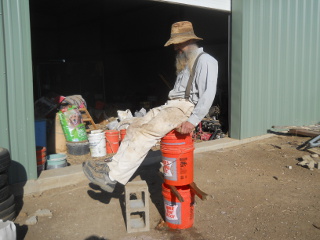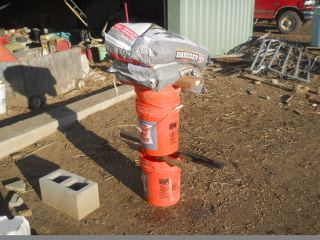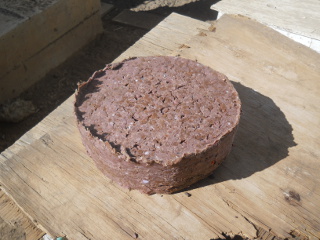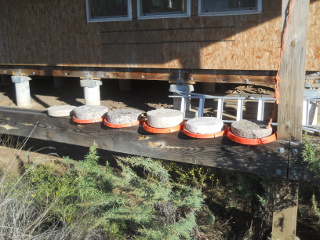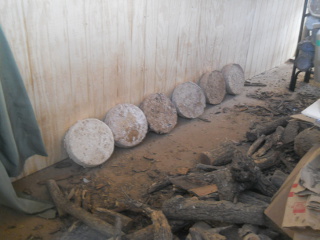We have about 11 acres on a field north of our goat pens. When we arrived here in Texas, most of that field was in Johnson grass, a grass that grows well here, especially in heat and drought. In fact, a former neighbor baled it one of our first years.
Since that time though, we plowed it and tried to grow oats, which didn’t work out too well. And then, instead of crops, I wanted to return to grass in hopes of becoming more sustaining for our cows or goats, and I tried planting B-dahl grass, which didn’t work at all.
And then, rather than fight it, I ironically went back and planted sorghum almum, which is a close cousin of Johnson grass, and so we have come full circle, basically back to Johnson grass. 🙂
God has also granted some other kind of thin, but lush grass to grow, and we are thankful.
This last time of plowing and sowing though, it also planted the cockleburs that were in the field, and so we pulled the whole 11 acres by hand several years ago. Each year I have to walk the field, but for all intents and purposes, it’s basically cocklebur free! Yippee! (You’ll understand my excitement if you read that blog post and think about pulling 11 acres of weeds by hand, even though it was only 1 kind of weed 🙂 )
With the field having some time to get established with the grasses, I wanted to be able to run the goats up there, which should basically end any need to buy hay for them. However, I needed to put up a north-south fence line, which is somewhere between 900 and 1000 feet.
This fence line was originally planned to be partially done by one of the folks who used to live here, but he never got around to it, although he graciously put in an entrance way for us at the county road because he would have been cutting off our main way of driving off the land.
Here is how I did each corner system. I concreted in 2 x 5 1/2 inch treated posts, about 46 inches a part, and then a half post about 78 inches from the 2nd post to function as a dead man. And then I cut out notches in the posts using a reciprocating saw where 4 inch cross posts would go, chiseled them out, and then installed the posts, drilling a 3/8 hold for a 1/2 inch by 8 inch long lag screw, and used a 1 1/2 inch paddle bit to counter sink the bolt:
This is where I started, putting in the corner braces:
I stretched the diagonal fence lines, using a come-along and fence stretcher, with 6 barbed wire strands, at 4-4-4-4-5-5 from bottom to top on the nubs on the t-posts:
And welded on some gate holders and added the gates:
This is where I cut the road’s fence where the gates are, pulled out those cedar posts, and then re-stretched and tied off each side of the fencing along the road:
Every 90 feet I concreted in a landscape timber, to try to help give the fence more stability, and then pounded in t-posts every 10 feet in between.
And then pulled the wires from bottom to top. For each wire after the first, I would roll out the next one, hang it on the previous wire, pull it tight with the come-along, and then go down the line a section at a time pulling the hung wire off the wire it was sitting on. Then, I tied off the pulled end, released the come-along, went to the middle of the stretched wire, tied it to the 2 middle t-posts, went half way in between each of those, did the same, and repeated with each half until all the t-posts were connected. I figured this would help keep even tension all along the wire.
And I added the middle gate.
Sadly though, I ran into some real trouble with a set of end posts once the wire was pulled, especially because on several of the wood posts I ran into rock while digging out the holes. The whole structure started leaning badly:
Eventually, the back post’s concrete broke, it started to torque, and the cross piece started sticking out:
Arg. I thought I might have to re-do that whole post system and re-pull each wire from scratch, but with the help of the tractor pulling the fence straight…
…I was able to dig out the end post, using what concrete was left in the hole as a positioner…
…re-concrete it in…
…tamp the dirt in front of the posts…
…add diagonal bracing wire to help keep it from leaning (which I should have done in the first place; I really thought the dead man post and diagonal kicker post would hold enough, but I guess not)…
…and then re-tie off the end. I also went back, undid all of the t-post clips on the t-posts that were leaning, straightened the t-posts, and then re-attached.
Yeah, that was fun. It seems to be doing better, although not perfect, in that, the back post started leaning in some perpendicularly, so I re-tied off again the ends but more in the middle of the post, and added a t-post brace to help keep it more upright:
But finally, here is the fence line:
With weather interruptions and these issues, it has taken at least a couple of months to get that part done. But I thank the Lord things weren’t worse, and for the provisions and health and strength to even work on this fence.
On to the 2nd half!
— David
